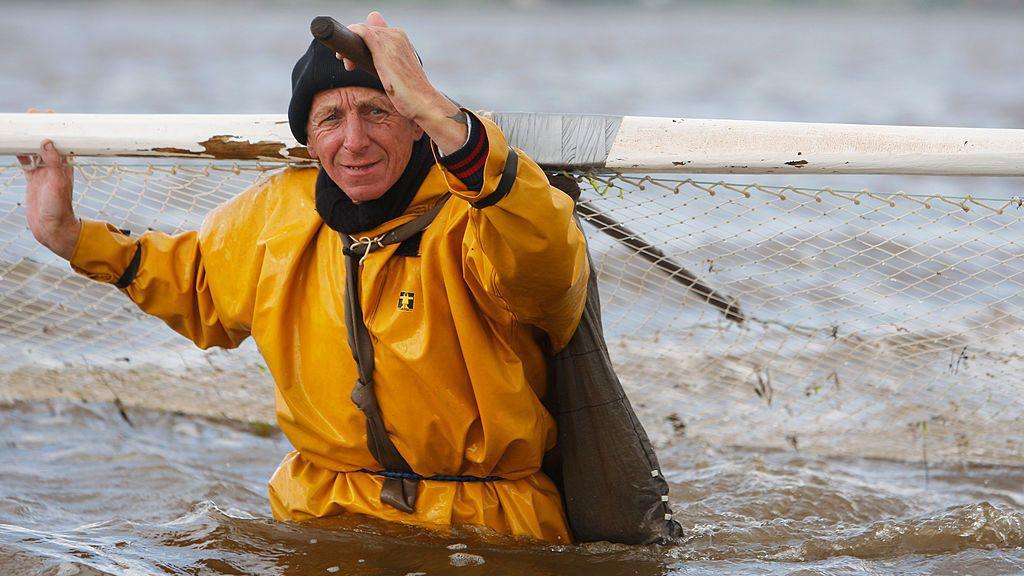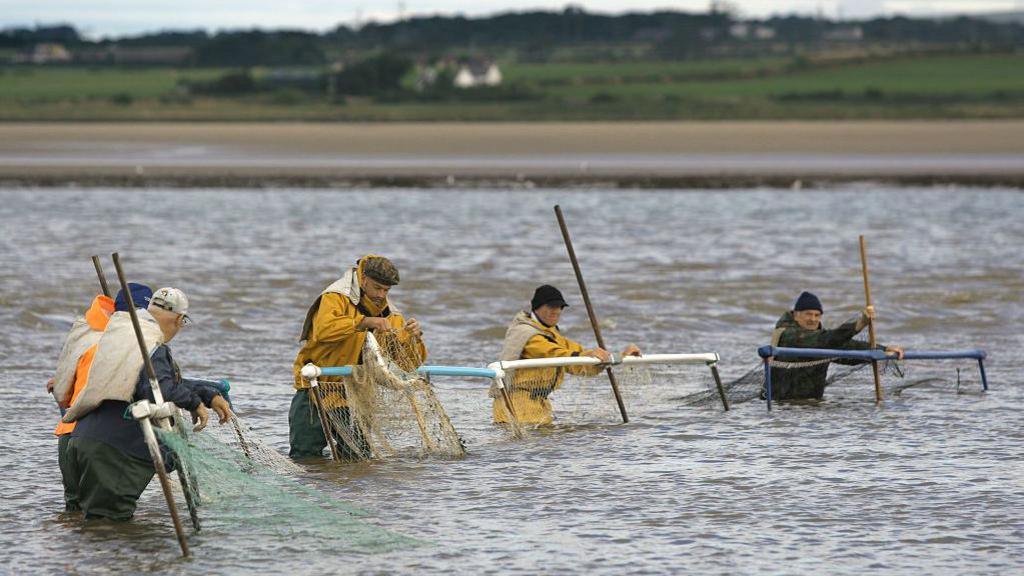Haaf net salmon catch on the Solway falls sharply

The technique of haaf net fishing used on the Solway goes back centuries
- Published
The number of salmon caught by fishermen on the Solway Firth using the ancient technique of haaf netting has fallen sharply.
Figures have dropped by more than 75% from 2022 to last year, despite conservation measures remaining in place.
Dumfries and Galloway Council's latest data shows that a total of 69 salmon and grilse were caught and released by haaf netters in the 2023 season, compared with 327 the previous year.
Uptake of licences by haaf netters - fishermen who use the method inherited from the Vikings - also saw just 24 licences of a possible 47 issued last year.
Fish licences less attractive
The drop in the number of salmon caught by haaf netters on the Solway is despite mandatory "catch and release" conservation measures - introduced by the Scottish government in 2016 - remaining in place.
Sea trout catch numbers in the Solway Estuary were also down, totalling 92 compared with 178 in 2022.
A report to the local authority's Annan Common Good Fund sub committee, external highlights that haaf netters can fish for, and retain, sea trout and other species.
However, while the retention of Atlantic salmon remains off limits, licences have proved less attractive, with about half of the possible number being taken.

The uptake of licences has been much lower than the number available
The haaf net fishermen of the Solway Firth maintain a tradition which dates back more than 1,000 years - and has been practised on both sides of the Scotland-England border.
There have been ongoing fears that the ancient practice could die out within a generation and that restrictions have hindered, rather than helped, its survival.
Unique to the British Isles, the technique for catching salmon is believed to have been brought to Scotland by the Vikings in 900AD.
The fishermen use a net mounted on a large home-made rectangular frame, which is supported by three legs and shaped like giant butterfly nets, to capture and scoop up their fish.
This is done while they trample over the sticky mudflats and immerse themselves waist high in its ebbing and flooding waters.
Follow the BBC for the South of Scotland on X, external.
Listen to news for Dumfries and Galloway on BBC Sounds.
Fight to save 1,000-year-old fishing technique
- Published21 January 2020
Get in touch
What stories would you like BBC News to cover from the south of Scotland?